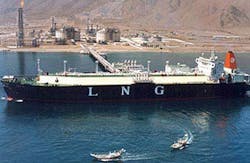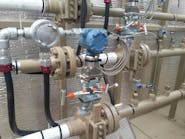China and India tend to grab the headlines when it comes to economic growth in Asia. But when it comes to energy, the entire Asia-Pacific region is of extreme interest and encompasses much more than can be contained within those two countries’ borders. In fact, given the distinct cultures and diverse political systems of the countries involved, the region’s characteristics aren’t easy to classify. One way to do it is as follows:
- China, the Koreas, and the countries of Southeast Asia mainland;
- Japan stands by itself;
- The islands of the Philippines, Malaysia and Indonesia;
- Australia and New Zealand; and
- Other smaller islands in the region
The primary energy sources in the region are coal, nuclear, oil, natural gas and renewables.
It will take 20 to 30 years before renewables count as a substantial energy source for most of these countries. The technology is not yet sufficiently developed for it to be price competitive with coal, oil and natural gas. Nuclear energy has its dangers and coal is a significant source of pollution, so many countries are turning to oil and natural gas as their primary energy sources. Between the two, natural gas is cleaner and more plentiful. Thus, natural gas is increasingly seen as a long-term bridge to renewables.
Energy challenges
Many of the countries in the region are challenged when it comes to energy resources. They must either produce enough energy to be self-sufficient or import what they cannot produce. China is rich in coal, and still relies heavily on it as an energy source. Japan has little in the way of oil or natural gas, and has relied on nuclear power and coal. Nearly all of the natural gas and oil it uses must be imported. Natural gas is imported in the form of liquefied natural gas (LNG). China also imports significant amounts of LNG.
Other countries in the region, including Australia, are rich in natural gas. Yet transporting natural gas can be challenging. Over long distances, natural gas is transported either by pipelines or aboard ships as LNG. Pipelines work within a country or regionally, but
typically not across the ocean’s expanses. Of course, natural gas pipelines can be buried under the water, as demonstrated by the natural gas pipeline that runs under the Persian Gulf from Qatar to Abu Dhabi in the United Arab Emirates (UAE). This pipeline supplies much of the natural gas used by both the UAE and Oman.
Australia, both a country and a continent, sees an opportunity to be a major natural gas supplier to the region. It has proved natural gas reserves roughly equal to those of China.
Australia already has undertaken a large number of natural gas projects. The largest by far is the Gorgon Project, located off the west coast of Australia. Construction of the Gorgon Project began in 2010. It is on schedule to produce its first natural gas late in 2014. Once the project is operational, it is expected that about three LNG shipments a week will be loaded for export to Asian markets via a 1.3 mile jetty.
The primary participants in the Gorgon Project are Chevron Australia, Shell Development Australia, and Mobil Australia Resources. Its current estimated cost is $54 billion. The Gorgon and Jansz fields are located about 130 kilometers, or roughly 80 miles, off the coast of Western Australia. An LNG plant is being built on Barrow Island, conveniently located between the natural gas fields and the mainland. This plant is expected to produce 15.6 million metric tons of LNG per year.
Conventional and not so much
While the Gorgon project is devoted to producing what is usually called conventional gas, Australia also has a significant amount of technically recoverable shale gas — about the same amount as Canada. Because Australia is so rich in conventional gas, developing shale gas has not been a priority. However, in October 2012, the first shale gas in Australia was pumped from a well in outback South Australia.
Now that Australia has begun producing shale gas, it will undoubtedly become a growing resource for this vast continent. Australia uses about half the natural gas it produces, and exports the rest in the form of LNG.
Australia has many other natural gas projects besides the Gorgon Project, though none larger. And there are many other natural gas fields throughout the region. What is common to many of these projects is that they involve shipping natural gas in the form of LNG. While there are some pipelines in the Indonesian-Malaysian region, sheer distance dictates that much of the natural gas shipped in this region will be in the form of LNG. In the Asia Pacific it is one of the most promising growth opportunities that has ever existed in the field of energy.
Natural gas has to be measured, especially for custody-transfer applications, whether it is in the form of LNG or goes by pipeline. This presents a major opportunity for flowmeter manufacturers. Both McCrometer and GE Measurement have brought out flowmeters designed specifically for LNG measurement. Look for other flowmeter manufacturers to take advantage of this unprecedented opportunity.
Jesse Yoder, Ph.D., is president of Flow Research Inc. in Wakefield, Massachusetts, a company he founded in 1998. He has 28 years of experience as an analyst and writer in instrumentation. He holds a U.S. patent on a dual tube flowmeter design, and is the author of The Tao of Measurement, published by ISA. Dr. Yoder can be reached at [email protected].


